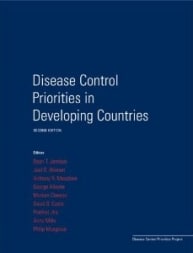May 27, 2010

The Question
What is the most effective way to reduce the health burden of soil-transmitted helminths?
What we found
Periodic anthelmintic therapy (deworming) is one of the most cost effective interventions available, especially for school-age children; delivering therapy to high risk individuals in targeted communities (regardless of infection status) 2-3 times a year is the ideal distribution strategy because of its simplicity and safety. School-age children are among the most likely to be infected, and the school is an ideal setting to administer the pills to every child in the community. Integrating the delivery of the deworming tablets with the existing education infrastructure also significantly reduces costs. The cost of a single treatment could be as low as US$0.05. The pre-existing infrastructure for treating these children makes this intervention very cost-effective.
Why it matters
The three most common soil-transmitted helminths-roundworm, whipworm and anthropophilic hookworm-infect 1.2 billion, 795 million and 740 million people each respectively and incur a large burden on the health and nutrition of those infected. Treating these infections is necessary. Helminth infections are known to harm the productivity and nutrition of those infected. There are also significant positive externalities when treated individuals decrease the likelihood of untreated individuals getting infected.

